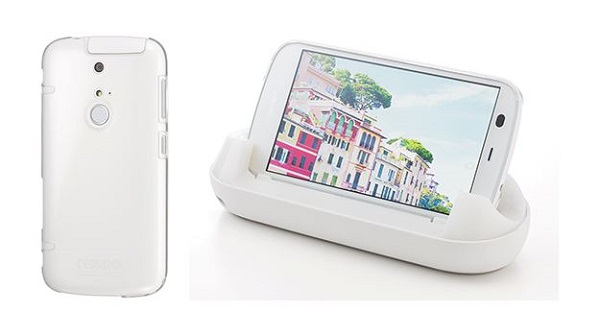Japanese carrier Softbank announced at its 2013 Winter – 2014 Spring press conference that one of the devices it’s going to offer to customers is Fujitsu Arrows A 301F, the fastest charging smartphone ever.
Fujitsu isn’t particularly known as a revolutionary manufacturer of smartphones, as its range didn’t feature any uncommon devices. Things will definitely change for this Japanese company after the Arrows A 301F launch, as this smartphone does not only have some impressive specs, but also the fastest charging cycle on the market.

As far as the technical specs are concerned, the Arrows A 301F sports a 2.2GHz Snapdragon 800 along with 2GB RAM, a 1080p 5-inch touchscreen display, 13 megapixel camera, Android 4.2, and 2,600 mAh battery. Some think that app developers don’t optimize their software properly, and hence the need for more RAM, but I tend to think otherwise. In time, we get to use more and more apps simultaneously, not to mention that the default features of the phone are rather resource-consuming, as well. I’m thinking eye-tracking cameras, fingerprint scanners and such.
What helps the Fujitsu Arrows A 301F charge so fast is probably Qualcomm’s Quick Charge 2.0 technology, which comes with the Snapdragon 800 processor. It goes without saying that it is only possible to charge for a full day’s use in 10 minutes only by using a special wall charger or dock, which will be sold either in the same box or separately. Charging the 2,600 mAh battery completely would take about three hours, and that would offer a stand-by time of three days. Even when disregarding the quick charge feature, the stand-by time is still impressive.

Quick Charge 2.0 was introduced by Qualcomm back in January, with the promise that charging times would be cut by up to 75 percent if a special charger is used in tandem with Snapdragon 800-powered smartphones. Since the Fujitsu Arrows A 301F only needs 33% of a full charge to last a day, everything makes sense now.
LG will probably pack a special charger with its Nexus 5, too. The FCC docs of this smartphone reveal that it runs on a Snapdragon 800 CPU, too. This might as well be a marketing strategy, but at some point in the future batteries will definitely become better. Combined with displays that consume less power and with better apps, this could be a new age for smartphones.
If you liked this post, please check Fujitsu’s future robots that will pass university entry exams and the Fujitsu smartphone for older users.










